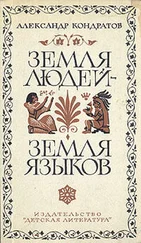P. Gluckman, A. Beedle, M. Hanson. Principles of Evolutionary Medicine . Oxford University Press, Oxford, 2009.
S. J. Gould. “The spice of life”. Leader to Leader 15. 2000, 14–19.
P. Gunz, F. L. Bookstein, P. Mitteroeker, A. Stadlmayr, H. Seidler, G. W. Weber. “Early modern human diversity suggests subdivided population structure and a complex Out-of-Africa scenario”. Proceedings of the National Academy of Sciences USA 106. 2009, 6094–6098.
M. Hammer, A. Woerner, F. Mendez, J. Watkins, J. Wall. “Genetic evidence for archaic admixture in Africa”. Proceedings of the National Academy of Sciences USA. 2011 108. 37, 15123–15128.
J. Hawks, E. T. Wang, G. Cochran, H. C. Harpending, R. K. Moyzis. “Recent acceleration of human adaptive evolution”. Proceedings of the National Academy of Sciences USA 104. 2007, 20753–20758.
J. Henrich, R. Boyd, P. J. Richerson. “Five misunderstandings about cultural evolution”. Human Nature 19. 2008, 119–137.
A. Hrdlička. The Skeletal Remains of Early Man . Smithsonian Institution, Washington, DC, 1930.
A. Keinan, D. Reich. “Can a sex-biased human demography account for the reduced effective population size of chromosome X in non-Africans?” Molecular Biology and Evolution 27. 10. 2010, 2312–2321.
K. N. Laland, J. Odling-Smee, S. Myles. “How culture shaped the human genome: Bringing genetics and the human sciences together”. Nature Reviews/Genetics 11. 2010, 137–148.
K. McAuliffe. “The incredible shrinking brain”. Discover Magazine , September 2010, 54–59.
P. Q. Montgomery, H. O. L. Williams, N. Reading, C. Stringer. “An assessment of the temporal bone lesions of the Broken Hill cranium”. Journal of Archaeological Science 21. 1994, 331–337.
E. Pennisi. “Evolutionary medicine: Darwin applies to medical school”. Science 324. 5924. 2009, 162–163.
L. S. Premo, J.-J. Hublin. “Culture, population structure and low genetic diversity in Pleistocene hominins”. Proceedings of the National Academy of Sciences USA 106. 2009, 33–37.
J. H. Relethford. “Genetic evidence and the modern human origins debate”. Heredity 100. 2008, 555–563.
P. J. Richerson, R. L. Bettinger, R. Boyd. “Evolution on a restless planet: Were environmental variability and environmental change major drivers of human evolution?” In F. M. Wuketits, F. J. Ayala, eds. Handbook of Evolution , vol. 2: The Evolution of Living Systems. Including Hominids , 223–242. Wiley, Weinheim, 2005.
P. J. Richerson, R. Boyd, R. L. Bettinger. “Cultural innovations and demographic change”. Human Biology 81. 2009, 211–235.
P. J. Richerson, R. Boyd, J. Henrich. “Gene-culture coevolution in the age of genomics”. Proceedings of the National Academy of Sciences USA. 2010. doi:10.1073/pnas0914631107.
C. Ruff. “Variation in human body size and shape”. Annual Review of Anthropology 31. 2002, 211–232.
P. C. Sabeti, P. Varilly et al. “Genome-wide detection and characterization of positive selection in human populations”. Nature 449. 7164. 2007, 913–918.
M. Stoneking. “Does culture prevent or drive human evolution?” On the Human. 2009. http://onthehuman.org/2009/12/does-culture-prevent-or-drive-human-evolution/
A. Templeton. “Out of Africa again and again”. Nature 416. 2002, 45–51.
S. A. Tishkoff, F. A. Reed, F. R. Friedlaender, C. Ehret, A. Ranciaro, A. Froment, J. B. Hirbo, A. A. Awomoyi et al. “The genetic structure and history of Africans and African Americans”. Science 324. 2009, 1035–1044.
E. Trinkaus. “The human tibia from Broken Hill, Kabwe, Zambia”. PaleoAnthropology. 2009, 145–165.
E. Trinkaus. “Modern human versus Neandertal evolutionary distinctiveness”. Current Anthropology 47. 2006, 569–595.
N. Wade. “Adventures in very recent evolution”. New York Times, 19 July 2010. http://www.nytimes.com/2010/07/20/science/20adapt.html
P. Ward. “What will become of Homo Sapiens ?” Scientific American 300. 2009, 68–73.
Словосочетание “человек современного типа”, или “современный человек”, подразумевает не ныне живущих людей, населяющих сегодняшний мир, а людей, обладающих признаками, морфологическими и поведенческими, характерными для людей современности. Чтобы избежать путаницы, мы будем стараться для обозначения наших современников пользоваться какими-то иными словами. (Здесь и далее – прим. перев.)
На собрании Линнеевского общества 1 июля 1858 года был сделан доклад об эволюционных идеях Уоллеса и Дарвина с выдержками из их рукописей; идеи и даже терминология обоих ученых были весьма сходными. Этот доклад, в отличие от книги Дарвина, не получил практически никакого общественного резонанса.
Здесь и далее цитаты из “Происхождения человека” приводятся в переводе И. Сеченова (1898).
Для Африки и Европы приняты разные хронологические единицы для культур плейстоценового времени: в Европе палеолит подразделяется на нижний, средний и верхний, после чего следуют мезолит и неолит; а в Африке различают ранний, средний и поздний каменный век, после которых идут подразделения постледникового времени, примерные аналоги мезо- и неолита. Так как эти подразделения и по датировкам, и по культурным атрибутам не всегда совпадают, их стараются не смешивать, несмотря на видимое сходство названий – “нижний палеолит – ранний каменный век”, средний каменный век вовсе не соответствует мезолиту, и т. д.
Уже после выхода этой книги был прочтен ядерный геном человека из Оасе. Выяснилось, что это был сапиенс, но получивший в результате скрещивания и гены неандертальцев. Неандертальскую кровь он получил от предка четыре-шесть поколений назад, то есть от своего пра- или прапрапрародителя. Однако гены людей из Оасе исчезли без следа, их не унаследовал ни один из ныне живущих народов. Fu et al., “An early modern human from Romania with a recent Neanderthal ancestor”. Nature, 2015, 524:216–219.
Читать дальше
Конец ознакомительного отрывка
Купить книгу












